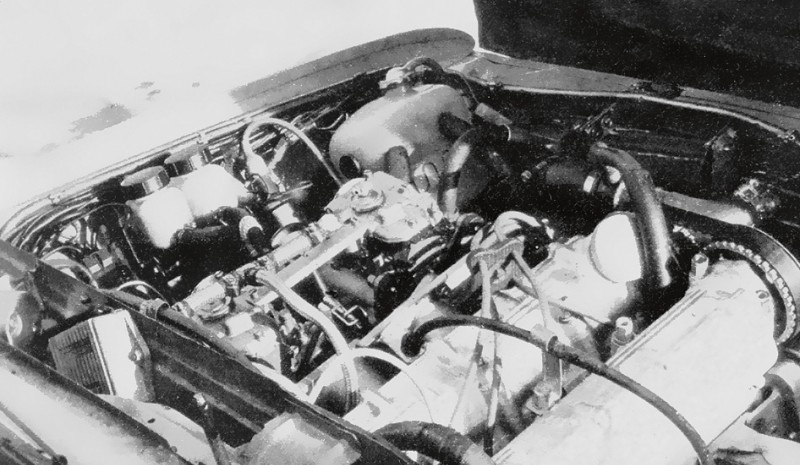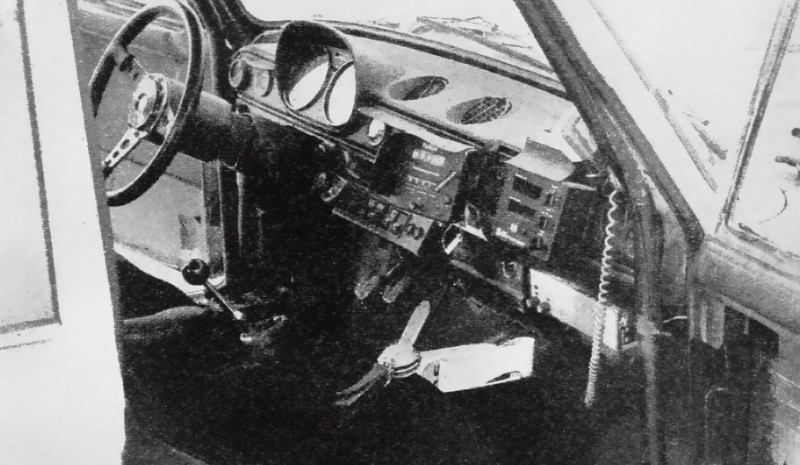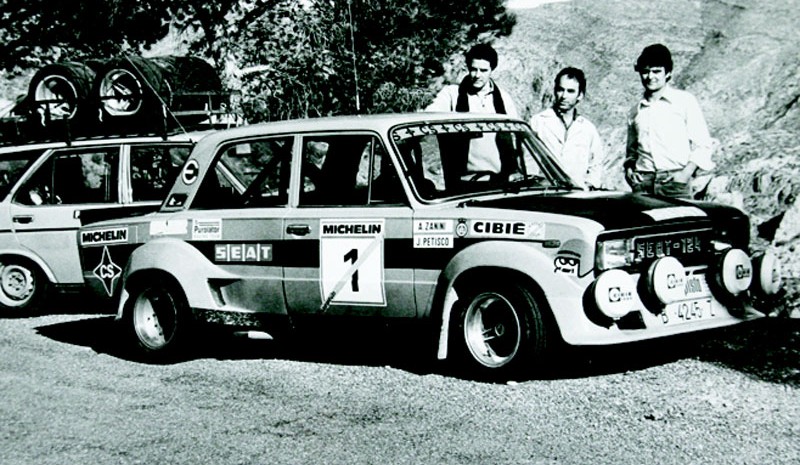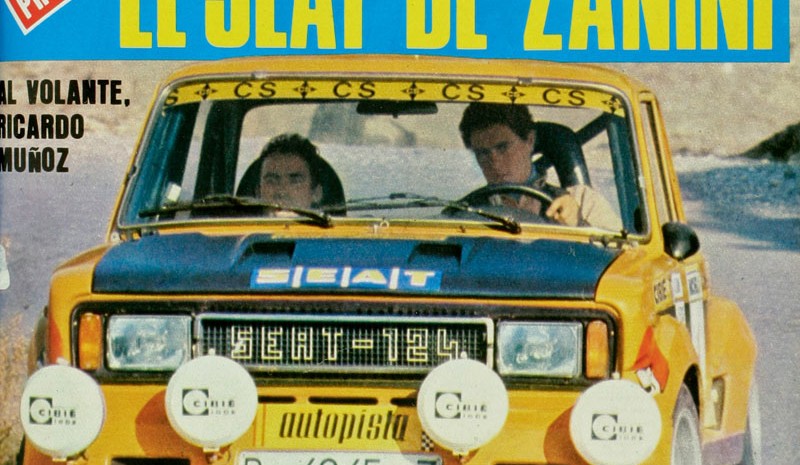classic test: Seat 124 FL, the replicant
He finished the Rallye Costa del Sol Almería 1977, I was able to test the Seat 124 Proto Antonio Zanini who just won for the fourth consecutive year rally champion Spain. Thirty-four years later, and thanks to Carlos Garcia Moreno, returned to relive that feeling to get on a replica of this legendary car.
If 1977 is remembered always as the year of the “taxis” of Seat in Monte Carlo, at national level it did not begin such a fruitful way, since in the Championship of Spain, following the retirements in Rally Costa Brava, in the Guillerías and Firestone, Antonio Zanini, Salvador Cañellas and Carlos Trabado they were at the bottom of the standings.
“Beny” Fernandez with a Ford Escort, Jorge de Bagration a Lancia Stratos and Marc Etchebers a Porsche Carrera had become opponents Seat Men difficult. Group 4 was mandatory in international rallies, but those of Spain could be aligned group, 5 further developed. So, by the end of the year, Seat improved and fiabilizó its 124 “Proto” I, born in the late 1976 provided as a Fiat engine of 2,090 cc origin: “with some characteristics similar to those of a truck engine, both couple who had “… according to the words of Vicente Aguilera, Technical Director at the time.
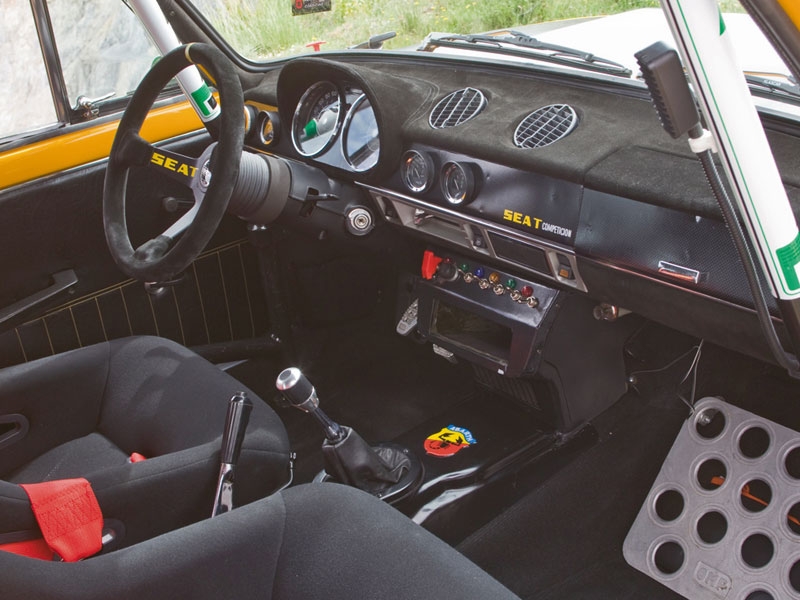
Three decades later, in Granada, the young entrepreneur Carlos Garcia Moreno I wanted to have such a car (Of which only two copies were made) and, based on a standard like body 124 made Seat Competition- welding the rear doors and flaps and spoilers recreating their fiber, it has left outwardly identical to Gr.5 Zanini. This work has much merit, as the young Grenadian had no official documentation and Seat I had to work “by eye”, “ear” and only with photos of old magazines. Painting, decorating, including advertising stickers are identical to the originals. It is a clear example of “if you want, you can”.
I was the only journalist (then also a pilot) who tested the 124 Seat Proto after his victory on Rally Costa del Sol 1977. Now I was back to him, even if it was a replica. The spoiler and front air intakes bonnet (slightly larger) are like that last rally car (the skirts changed much). Cibie positioning the auxiliary headlights is also exactly
As in the Official Seat. So, outwardly, even in the square rubber feet that made craft rear bumper, everything reminds us that historic car.
Carlos is still working -as far extent feasible in the mechanical part, a 16-valve engine and an independent rear axle; but for our test, still wearing the 1,919 cc it mounted equipped with a horizontal double carburettor Weber 40 mm. The change was a VL Motorsport Czech six-speed straight teeth, which worked much better than the original 124 Abarth Proto box; at least it was more enjoyable and less hard to handle.
Inside the Grenadian Proto is very little modified, but the original was very close to the series, except for the implementation of two tripmaster Halda for the passenger. Tapestry was commissioned, with great acierto-‘s companion Carlos, María José Montalbán. The steering wheel is adjustable in height and is pumped to the pilot, while the original was flat. I remember when I rode at 124 Zanini was surprised how close to the wheel driving the Catalan and, to prove it, I understood at once: with wide tires 9 “inches without power steering, upon reaching a fork had to” roll up their sleeves “. That car was spinning company of the Titans. Fortunately, the modern has narrower wheels.
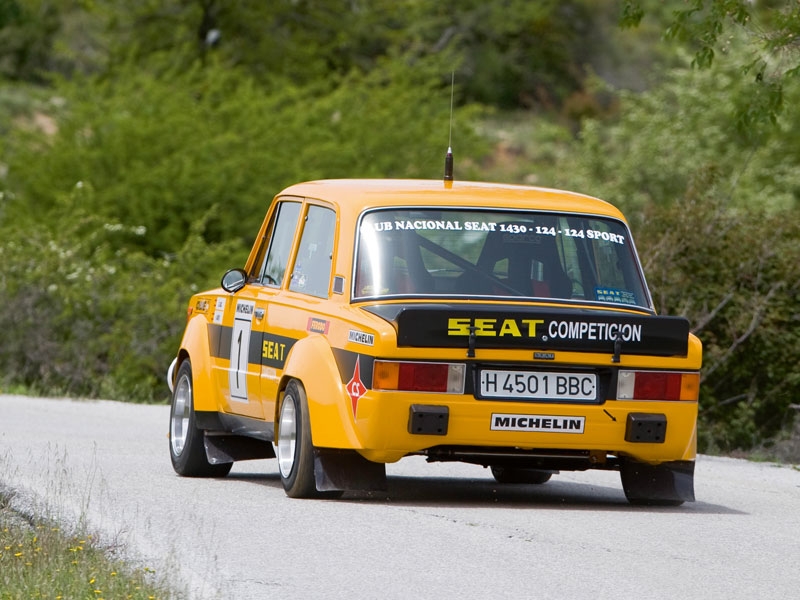
resented the car up and not give all possible Coiling power. It should be noted that 1977 Seat men had so much trouble to start the engine high compression, which Aguilera mounted two batteries to supply enough power to the starter motor. It also reminded me of when I ran with official Seat in Ypres and Portugal. Vicente Aguilera we used to insist not to use the change to slow“To curb the brakes are not the change …”.
However, at 124 Proto, small discs in 13-inch wheels worked really bad and often had to resort to stop the engine brake. In the car of our test in a very rugged area of Sierra Nevada and downhill, the brakes (despite having ventilated front discs and rear) functioned as in the original model, so we had to anticipate enough braking and support them with effective Czech six-speed gearbox. In sum, a car whose realization makes them feel cared for his own illusion of driving a piece with a great history behind it.
A story that is the culmination of the adventure Seat in Spain Rally Championship.
DATA SHEET
Motor:
4 cylinders in line, Fiat block and aluminum head 16 valve. Crankshaft five supports. Forged pistons. Cooling liquid and additional oil radiator. Position: Front Longitudinal. Displacement: 2,090 cc. Compression: 12: 1. Maximum power: 210 hp at 7,500 rpm. Distribution: Two camshafts in the cylinder head. Distribution belt. adjustable pulleys. Four valves per cylinder. Power: Two 45 horizontal Weber carburetors double body. Electric bomb. Cooling: two water and oil circuits with automatic dual fans. Electrical Equipment: Two 12 volt batteries. Ignition: Electronic Magnetti Marelli.
Transmission:
At the rear wheels. Box Abarth five forward gears with straight teeth, without synchronizers. Clutch: Sachs bidisco ceramic. Autoblocante ZF tared 75%, with end group 9/40.
Frame:
Self-supporting monocoque steel rollbar origin 124. six points and structural reinforcements. Front suspension: Triangles overlapping with coil springs, telescopic shock absorbers and stabilizer bar Record 21 mm. Rear suspension Independent wheels McPherson system with lower triangles, upper assembly rear damper (Cut and Coso) and stabilizer bar 12 mm.
Brakes:
Ventilated front discs with four-piston calipers Lockheed. solid discs rear rapier ATE. Hydraulic handbrake with two small independent pills behind.
Address:
Zip. Derived Fiat 131, with nine instead of six teeth.
Wheel:
Targa alloy wheels 9 x 13 “x 13 forward and 10” behind. Tires: Michelin 18/53/13 and 24/53/13.
Gasoline deposit: 55 liters.
Weight: 990 kg.

